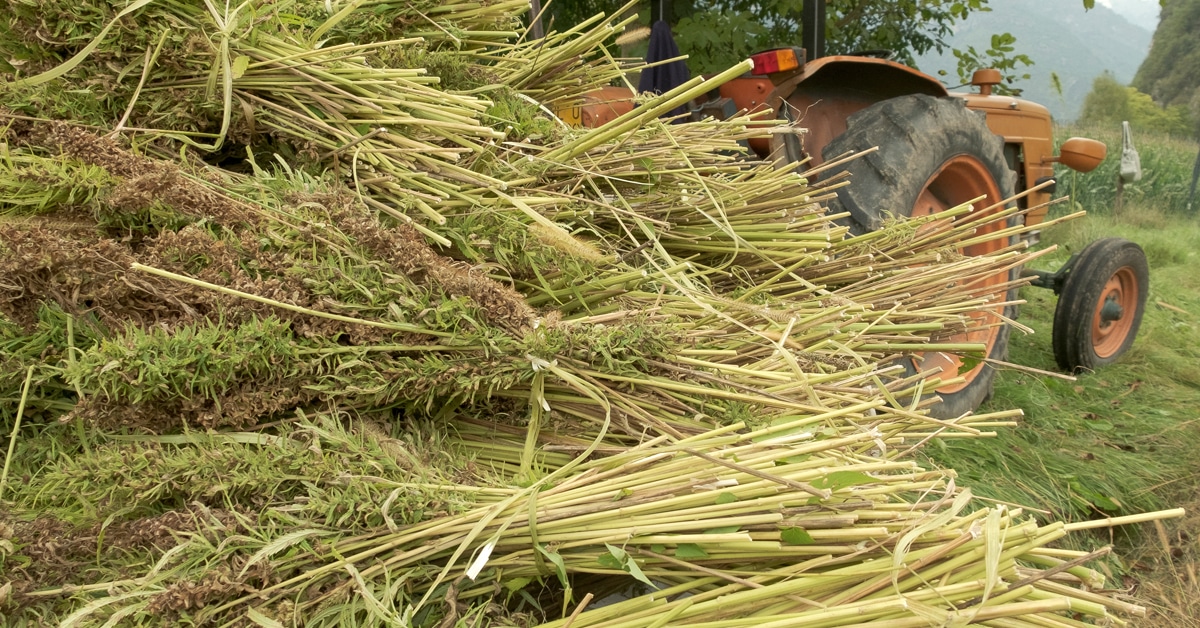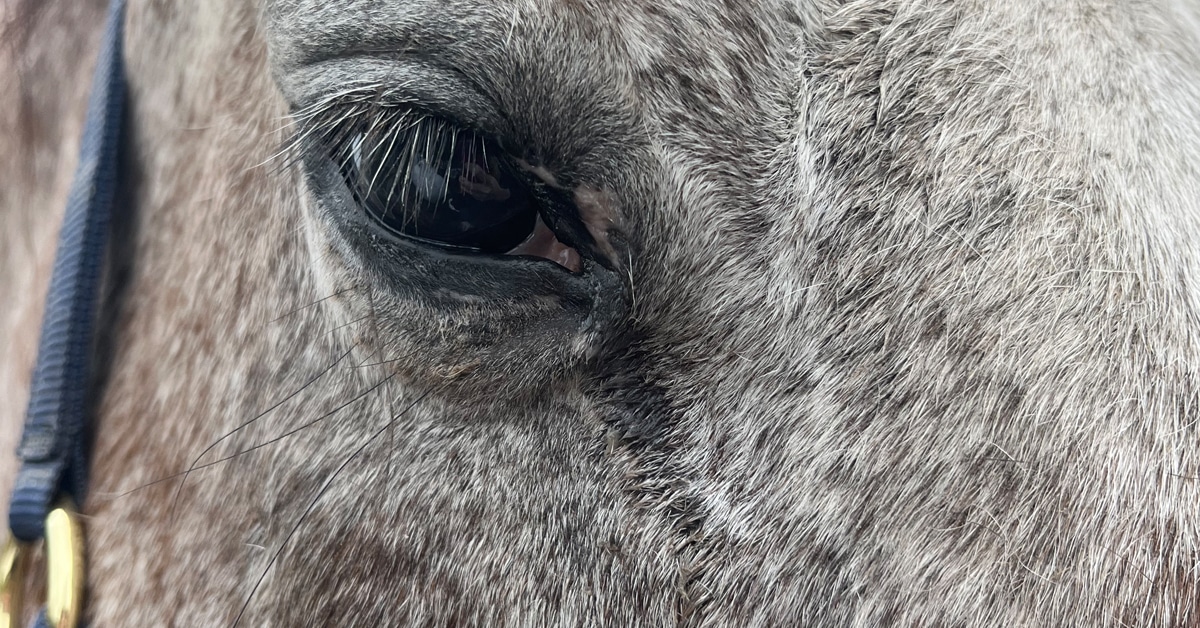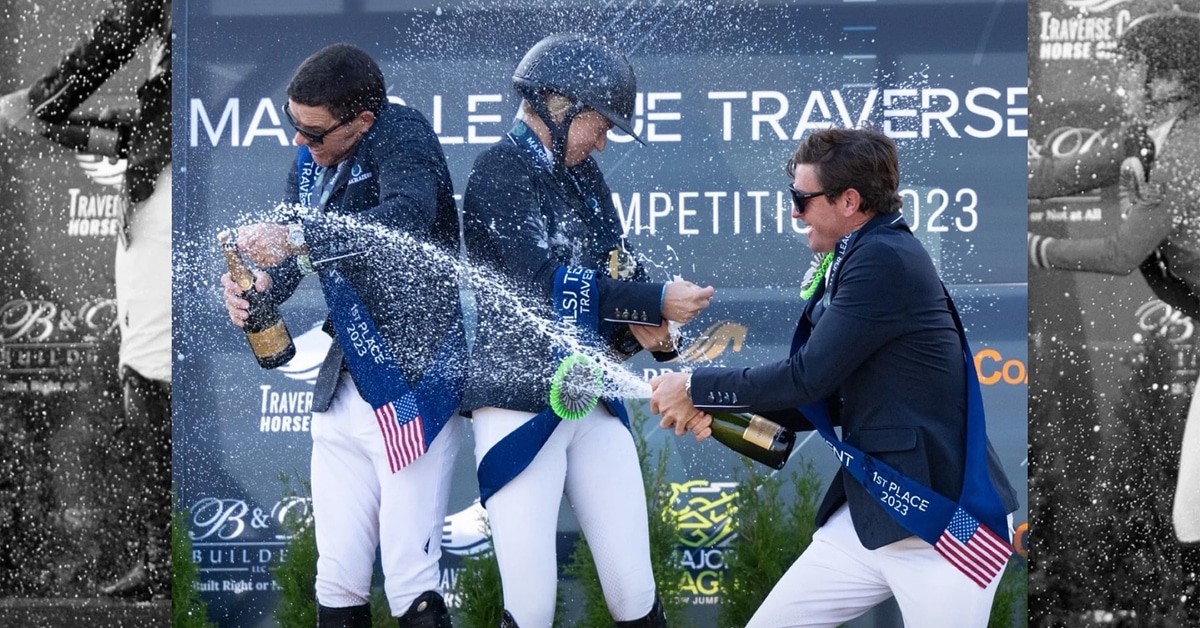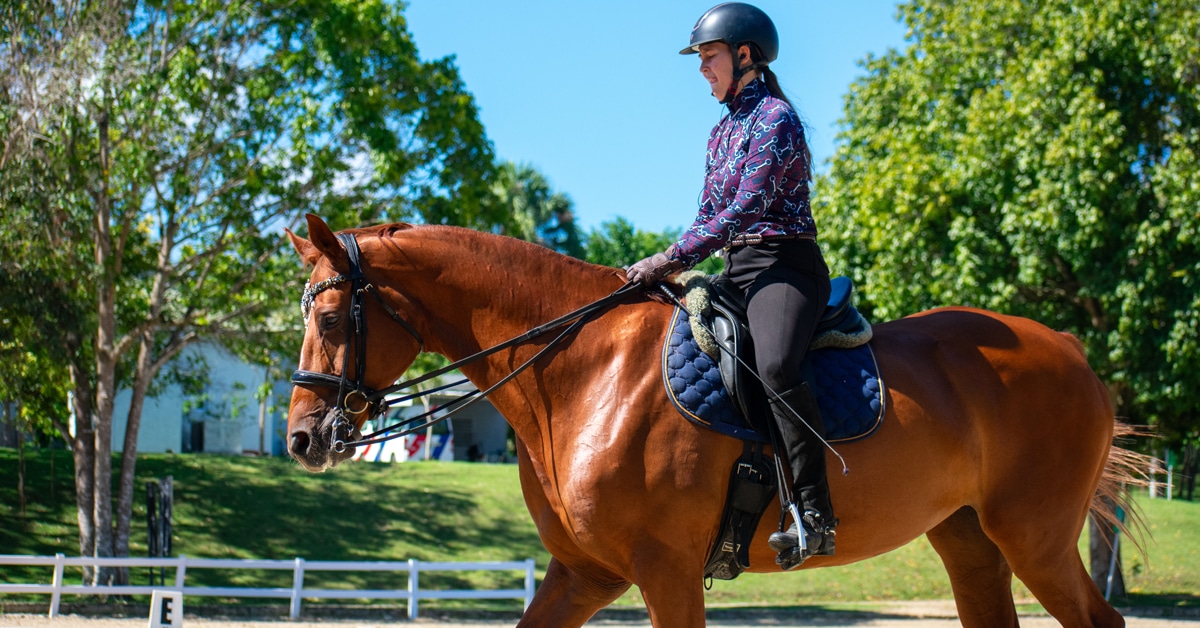Cristina Barbour, who operates Echo Hill Eventing with husband Curtis in Shelburne, ON, was having ongoing bit issues with her 12-year-old Thoroughbred gelding Rather Loud. Horse and rider have been much happier since Cristina started riding him in a hackamore last year.
A hackamore exerts force on a horse’s nose rather than its mouth, and a curb chain or strap presses behind the chin. The shorter the shank, the less the pressure; curving shanks are less severe than straight shanks; and wider nosepieces are less severe than narrow ones.
Cristina talks about her experience with a hackamore:
Rather Loud (Larry) has a really sensitive mouth and even without pulling much on the reins, he’d develop little cuts on the left side of his mouth and wouldn’t want to turn in that direction. I tried elevator bits, ports, even a Myler combination bit with a nosepiece, but nothing worked.
Kyle Carter suggested I try a hackamore he had. I put it on Larry and he was perfect. He’d go, whoa, jump a fence. He was really responsive from the get-go.
When Larry gets nervous, he bolts. He gets his head up and with a bit, the more I pulled, the higher his nose got. With the hackamore, he can’t get his nose in the air. It gives him confidence; he knows he has the hackamore on, he knows I am not going to hurt his mouth, and he has transformed into a better horse.
While I was really happy riding him just in a hackamore, it does decrease your turning ability a bit. I was going training level at the time, so there were not many tight turns. Because it was harder to do tight rollbacks, when we went preliminary I got a snaffle and used it with the hackamore. I had one rein for the hackamore and another for the bit, but it was difficult to manage both, because the hackamore has really long shanks. Eric Lamaze used to ride Hickstead in a hackamore with a bit and connector so that he had only one set of reins. I made my own connector, and while Hickstead’s had more bit action, I attached the rein lower, as Larry responds more to the hackamore action. I upgraded to a better hackamore with an extra attachment that you can put a bit on. I put the hackamore on the regular curb attachment and a thick hollow-mouth bridoon on the other.
In a hackamore, you can still get connection and feel, and the horse tends to carry its head lower. I make sure I release enough to take the pressure off Larry’s nose, but keep a light bit connection. Larry used to get heavy in my hands, but as soon as I put the hackamore on, he is light.
If you try a hackamore on your horse, start in an arena so you can see that your horse is going to be responsive. With Larry, I started with transitions – walk/trot, walk/halt – then picked up a canter. Then I tried a more open canter to make sure he would come back quickly. I jumped over some small jumps just to make sure he would turn. I’d jump, turn left, jump, turn right. The next day, I popped him over some cross-country fences and galloped him up a hill to make sure I had control and brakes.
Larry was our problem horse, but he’s great now. He loves going in a hackamore and he doesn’t get upset or nervous anymore.”
The Latest









